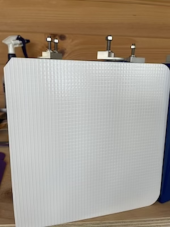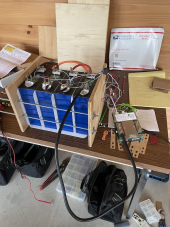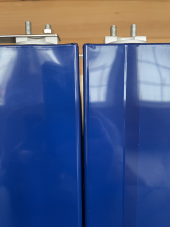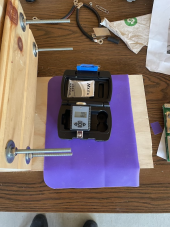Thanks for your comments time2roll,
Yes, good point, the bottoms of the cells are touching so as to exaggerate the gap a bit.
Last week, before I read your post, I rigged up a makeshift "compression" jig so I could start testing the cells as soon as possible after I received the cells from the supplier. I wanted to test the cells before the thirty day return policy expired. This is my first purchase of Lifepo4 cells and it took me a lot longer to test the cells than I had anticipated. Consequently, I missed the expiry date. However, I am satisfied with what i have, albeit the cells might not be perfect.
The photo below shows the white plastic cooking sheets I purchased from Walmart to serve as insulating dividers between the cells and the jig.

As it turns out, those white plastic dividers were a bad idea because they embossed grooves into the aluminum surfaces of the cells.
The embossing is disclosed in the photo .

Below is a photo of the makeshift, temporary jig I used.

When the cells arrived, I had no idea the state of charge. As it turns out, the SOC was about 50%.
I first tightened the nuts on the jig hand tight, firmly with my fingers.
Then I assembled the pack into a 12v battery and discharged the 12v battery to about 10% SOC with a 20Ah load.
At 10% SOC, I noticed that the nuts on the jig had loosened to the point where there was very little, if any, clamping force.
So, at 10% SOC, I hand tightened the nuts again and added a bit of extra force hoping that I could possibly unbloat the cells. The total amount of force was not measurable by my digital torque wrench.
Then, with the cells still in the jig, I cycled the 12v Battery by charging at a 25Ah rate to 90% SOC and then discharged the 12v Battery with a 25Ah load until 20% SOC. At not time did the battery or terminals get warm.
At a 20% SOC, I removed the jig and noticed the embossed grooves on the sides of the cells.
So, I continued with my testing and learning. More to come later.









